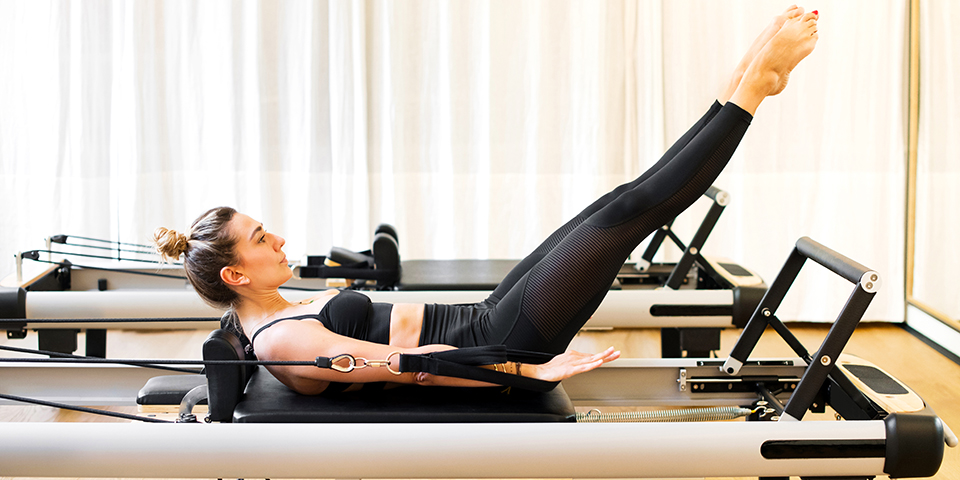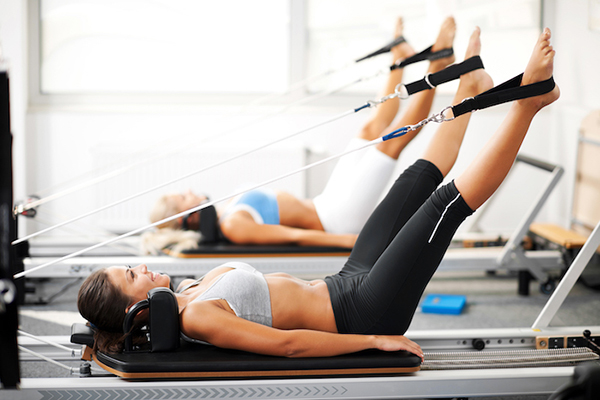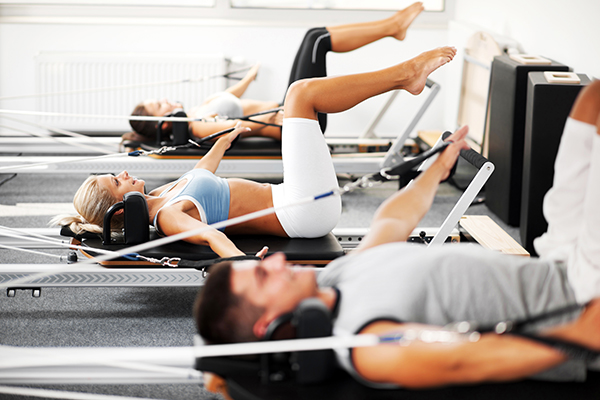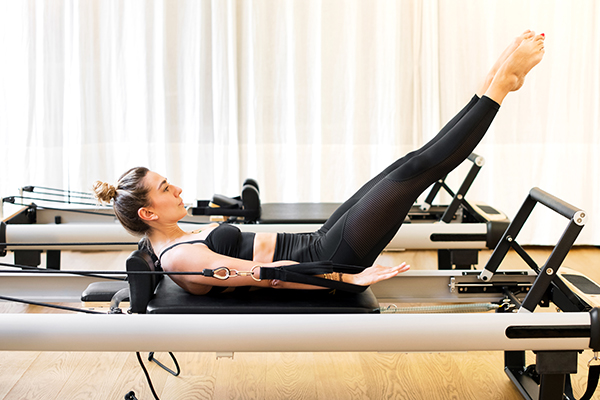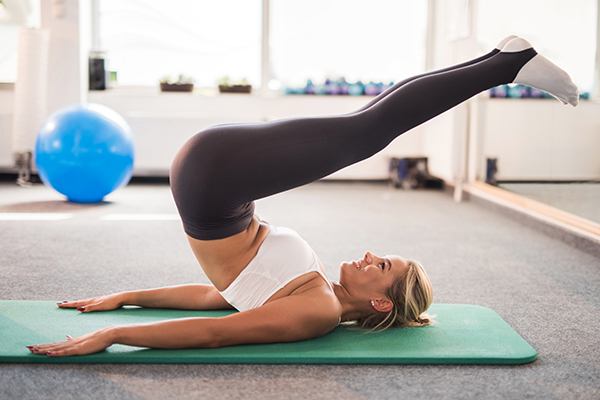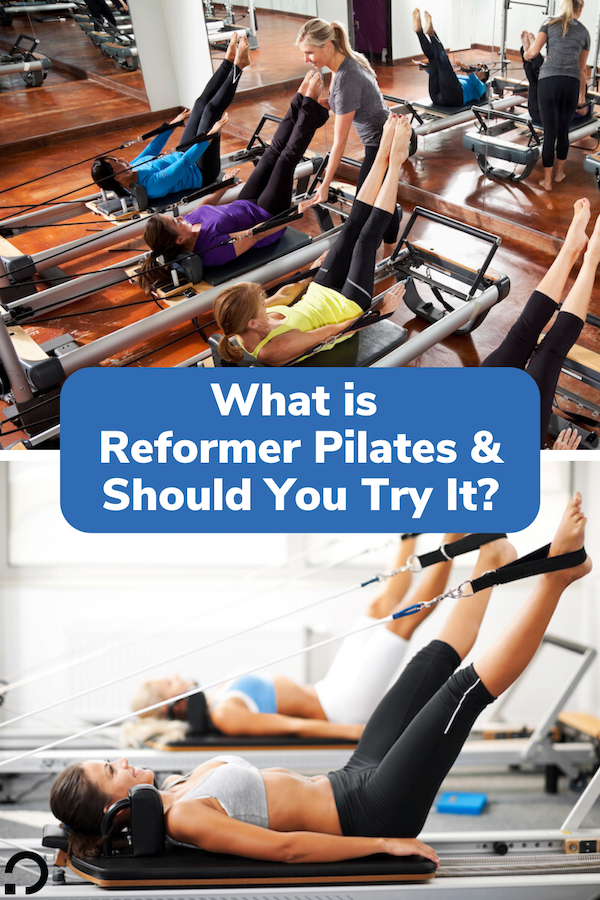The Pilates reformer is a pretty unique piece of equipment. You may have seen one — which resembles a bed frame with a series of pulleys and springs attached — at your local gym or Pilates studio.
But what exactly does it do? Is reformer Pilates better than mat Pilates?
Here’s what you need to know.
What Is a Pilates Reformer?
The reformer is a specialized piece of equipment originally created by Joseph Pilates “to accompany and enhance the mat routine,” says Mimosa Gordon, a Pilates instructor, and ACSM and NASM-certified personal trainer based in New York City.
The apparatus includes a horizontal platform that rolls along a frame, with spring resistance on one end and a pulley system on the other.
As you use straps and pulleys to move the platform, the springs — along with your body weight — provide resistance.
You can sit, stand, kneel, or lie down on a Pilates reformer, and the apparatus can be used to perform many of the same exercises found in Pilates mat routines, including the Pilates leg kick.
The springs provide resistance, and they can be adjusted to make movements easier or more challenging.
What Are the Benefits of the Pilates Reformer?
Reformer workouts offer similar benefits to mat Pilates, Gordon says.
You’ll get a full-body workout with a focus on building a stronger core — i.e. the abdominals, hips, and back.
And while evidence is limited, one study suggests equipment-based Pilates may be more effective than mat Pilates for helping to manage chronic lower back pain.
The reformer also provides the usual Pilates benefits, Gordon adds — “like enhanced coordination, improved posture, stretching and strengthening in one package, and focus.”
One downside: The reformer isn’t exactly portable.
“You can’t really take it with you like you can take your mat routine,” says Gordon. “Reformers are not small, and they are not inexpensive.”
That’s where mat Pilates gets a leg up – especially programs that you can do at home, like XB Pilates with Andrea Rogers.
Mat Pilates vs. Reformer Pilates
Trying to decide between mat Pilates vs. reformer Pilates?
There are some key similarities between the two types of Pilates.
Both mat and reformer Pilates workouts “should flow from one exercise to the next,” Gordon says. “The movements are rhythmic, and the shapes you make with your body are mostly the same.”
Here are a few other factors that may help you decide between reformer Pilates and mat Pilates.
Reformer Pilates
- Good for mastering new moves. “The reformer can be a better place to learn an exercise before taking it to the mat,” Gordon says.
- More awareness of alignment and proprioception. Because you’re using your hands and feet to push and pull, Gordon says, “You can see if you are centered and probably feel if you are using one side more or less than the other.”
- More resistance. There’s a bigger learning curve in reformer Pilates, Gordon says, but it pays off: “It takes extra effort to learn the transitions and really get a feel for working the springs, but you will right away notice and enjoy the resistance.”
- More expensive. Not only is the reformer itself pricey, but reformer classes also tend to be more expensive than mat classes due to the limited class size.
- Not portable. A reformer is a pretty hefty piece of equipment – not exactly conducive for traveling. That means you have to be the one who travels to a studio where it’s located.
Mat Pilates
- Great for beginners. Pilates mat exercises are beginner-friendly and can be modified to suit all levels and body types. And if you’re just getting started, you may find a mat less intimidating than the pulley system.
- More accessible. You can do mat Pilates just about anywhere — even a home gym or hotel room. With the on-demand XB Pilates workouts, you also have the flexibility to do it on your own schedule.
- More economical. Depending on where you get your classes, mat Pilates can be a significant saving. And if you choose a streaming platform like Beachbody On Demand, you can get your Pilates classes and other kinds of workouts, like barre and yoga.
- Less feedback on alignment. Because mat Pilates is a body-weight workout, Gordon says, “You have to rely on your own sense of alignment and balance and whether you are working evenly. That is challenging.”
Can Reformer Pilates Help You Lose Weight?
Pilates reformer workouts are designed to keep you moving the entire time.
“A reformer workout done properly, with transitions that are part of the exercises, means the person working out never stops,” says Gordon.
Pilates can be “mildly to moderately cardiovascular,” she adds.
According to the American Council on Exercise, the calorie burn from a Pilates workout can range from 175 calories to 254 calories per 50-minute session (though the exact number depends on a number of factors, like age, weight, and workout intensity).
Reformer Pilates offers cardio and strength benefits, which means it can definitely be part of a weight-loss plan.
If weight loss is your main goal, you may want to look for a higher-intensity Pilates class that burns more calories, or add another form of high-intensity exercise to your workout plan between Pilates sessions.

